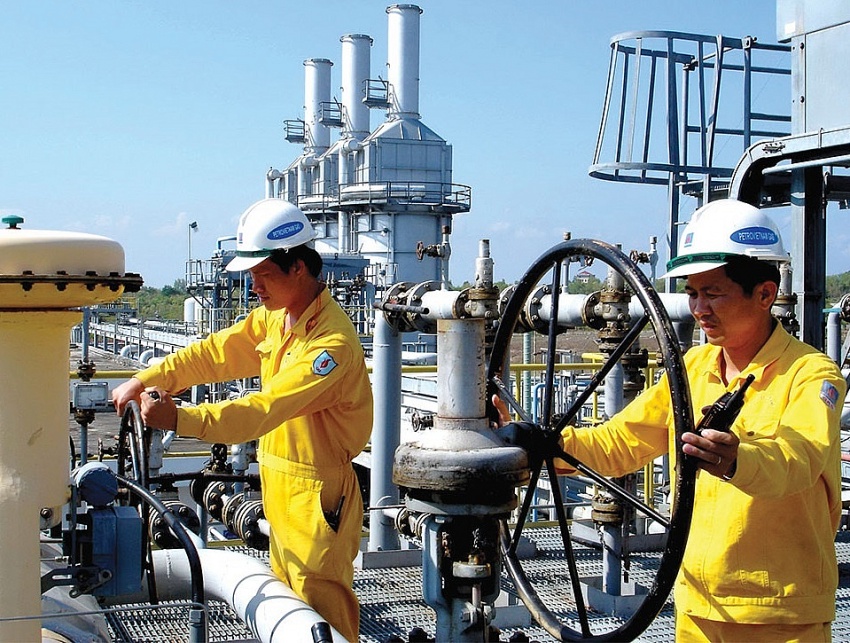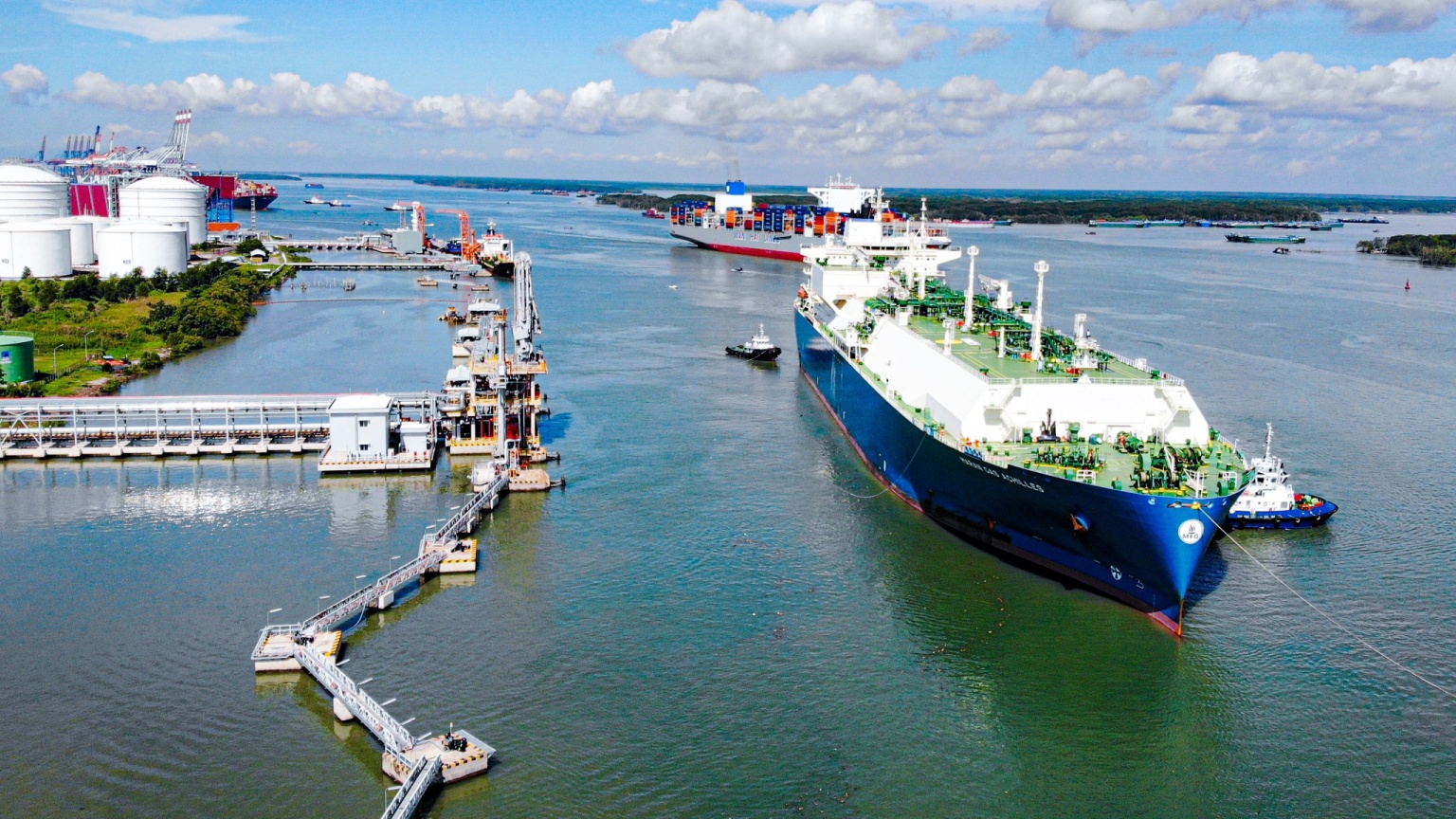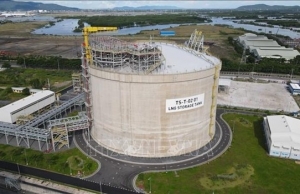Structure lacking for LNG activities
Thi Vai terminal received its first liquefied natural gas (LNG) vessel on July 10, with a shipment of nearly 70,000 tonnes from the Indonesian port of Bontang. PetroVietnam Gas (PV Gas), the first unit in Vietnam eligible for LNG import and export, announced the arrival the previous week. PV Gas is working to secure a long-term fuel source for future LNG gas power facilities. Pham Van Phong, general manager of PV Gas, and Marion Power, executive for business development at ExxonMobil, convened in Hanoi to discuss refuelling for the commercial operation of the Thi Vai project.
 |
| Strong commitments are necessary when it comes to negotiating gas power agreements and signing long-term contracts, Photo: Le Toan |
Several additional energy suppliers are actively pursuing opportunities to sell LNG to Vietnam. Elena Golm, head of Oil and Gas Coverage at Novatek, came to Hanoi to debate the possibility of selling LNG between now and 2026 with PV Gas executives. Additionally, the parties reviewed options for partnership and investment in LNG power project chains in Vietnam.
Yoon Hee-seong, director general of the Export-Import Bank of Korea (KEXIM), said future orders for large-scale ventures are anticipated. “KEXIM is going to promote South Korean engineering, procurement, and construction firms that are involved in these projects,” he said.
Hee-seong reported that at the end of June, KEXIM signed an MoU on credit granting to Long An Energy Corporation, a joint venture between VinaCapital and GS Energy, for development of two gas turbine plants and a $3.13 billion LNG storage system in the Mekong Delta province of Long An.
Vietnam’s Power Development Plan VIII (PDP8) calls for the construction of 13 LNG-fired power stations with a combined capacity of 22.4GW by 2030, the first of which is anticipated to enter service by the end of 2024. However, the majority of domestic energy developers argued that the specific level of policy, dedication to output, and electricity purchase price are the determining factors for effectively converting LNG into a primary power source during the current decade, carrying growth of 26 per cent, the highest rate among primary power sources, and accounting for 27 per cent of total power capacity, as outlined in the PDP8.
According to the PDP8, the demand for LNG imports is expected to reach 14.46 million tonnes per year by 2030 and grow by 1.92 million tonnes per year by 2035.
PetroVietnam Power Corporation (PV Power) is one of the businesses that has benefited from gas-to-thermal power development. The corporation implemented the Nhon Trach 3 and Nhon Trach 4 thermal power plant projects in 2019, the first LNG-fired thermal power venture in Vietnam, with a capacity of 1,500MW and a total investment of $1.4 billion.
The global fuel market is currently well-balanced, but the chief of PV Power’s Investment and Construction Department, Vu Van Loi, has reservations about the “lack of expertise” in negotiating the current import contract. “The Vietnamese party frequently misses out on the chance to negotiate an affordable, long-term purchase contract,” Loi said.
Vietnam also lacks a structure for LNG electricity tariffs, offtake rate, and a system to convert gas parity to electricity prices, according to Loi. The country requires regulations and guidelines on design, construction, transportation, and maintenance of import terminals, as well as on the safety of fuel transportation, loading, offloading, and storage, he added.
Nonetheless, the government has an interest in this field. Pham Quang Huy, deputy director of the Electricity Regulatory Authority of Vietnam, said, “Negotiation of a gas power purchase agreement can be challenging because all plants require a high commitment rate of 60 per cent or more of contracted power output in order to borrow capital for implementation and sign long-term contracts.”
According to Huy, Electricity of Vietnam only negotiates contracted power output based on actual demand and the facility’s electricity pricing on the market.
 | Vietnam’s LNG power projects face regulatory hurdles despite high hopes Vietnam's liquified natural gas (LNG) power projects, hailed as potential baseline power sources with quick startup capacity, continue to confront significant challenges amidst efforts to expedite their progress. |
 | Thi Vai Terminal receives first LNG shipment As PetroVietnam Gas (PV Gas) works to secure a long-term fuel source for further liquefied natural gas (LNG) gas power facilities, the future stable operation of power facilities in Vietnam is being hampered by a lack of infrastructure to import and store sufficient liquefied natural gas. |
 | 1.3-billion-USD LNG terminal warehouse project gets greenlight The People's Committee of Binh Thuan province has issued a decision approving the investment of Son My liquefied natutal gas (LNG) terminal warehouse project in the south-central province’s Ham Tan district. |
What the stars mean:
★ Poor ★ ★ Promising ★★★ Good ★★★★ Very good ★★★★★ Exceptional
Related Contents
Latest News
More News
- Dat Bike accelerates sustainable mobility (January 07, 2026 | 15:24)
- Innovation to support modern healthcare development (January 07, 2026 | 10:00)
- Six localities record double-digit growth as regional performance diverges in 2025 (January 06, 2026 | 18:00)
- E-commerce market undergoes transformation amid rising competition and regulation (January 06, 2026 | 17:54)
- Vietnam’s industrial output hits seven-year high in 2025 (January 06, 2026 | 17:47)
- GELEX’s credit rating outlook upgraded to 'Positive' by VIS Rating (January 06, 2026 | 16:49)
- Finance sector lays firm groundwork for 2026 after major reform (January 06, 2026 | 15:30)
- Vietnam’s seafood exports surpass $11 billion in 2025 (January 06, 2026 | 08:51)
- Vietnam GDP posts second-strongest growth since 2011 (January 06, 2026 | 08:35)
- Double-digit GDP growth within reach with shift to higher-value expansion (January 06, 2026 | 08:33)

 Tag:
Tag:




















 Mobile Version
Mobile Version